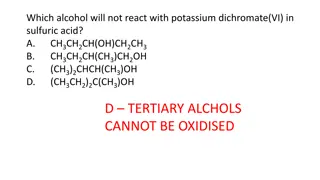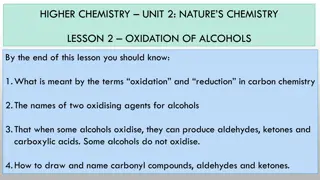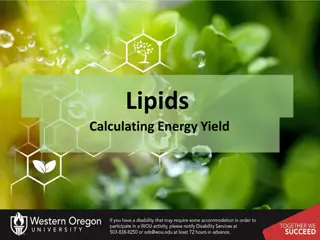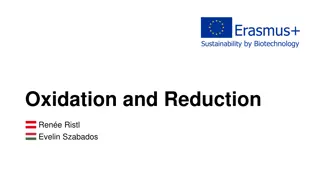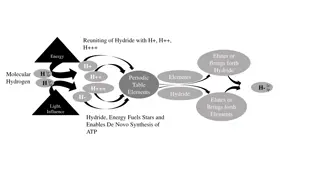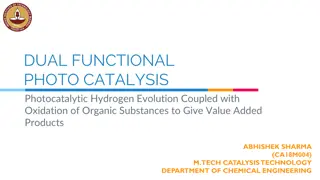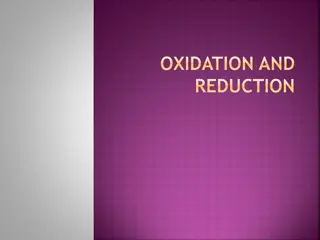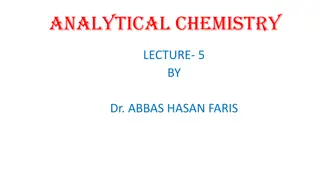Understanding Oxidation Numbers in Chemistry
Oxidation is a process where atoms or ions gain a more positive oxidation state, while reduction involves attaining a more negative oxidation state. This informative content explains oxidation numbers, uncombined elements, monoatomic ions, and oxidation rules in compounds. Practice determining oxidation numbers for elements in different compounds like NaCl, H2SO4, AgNO3, CO2, SF6, and NO3-.
Download Presentation

Please find below an Image/Link to download the presentation.
The content on the website is provided AS IS for your information and personal use only. It may not be sold, licensed, or shared on other websites without obtaining consent from the author. Download presentation by click this link. If you encounter any issues during the download, it is possible that the publisher has removed the file from their server.
E N D
Presentation Transcript
Oxidation Process in which atoms or ions attain a more + oxidation state Ex. Na Na+ + e Cl- Cl + e Ca+ Ca2+ + e
Reduction Atoms or ions of elements attain a more negative oxidation state Ex. Cl + e Cl- Mnemonic: OIL RIG Oxidation involves loss, reduction involves gain
Oxidation Number Uncombined elements have oxidation # of 0 Monoatomic ions have oxidation # equal to their ion charge F is always 1 in a compound O is almost always 2 in a compound H is +1 in all compounds except those with metals (then its 1) More electronegative element is assigned a number equal to its ion charge Algebraic sum of oxidation numbers in a compound is always zero
Practice Determine the oxidation numbers for each element in the compounds below NaCl H2SO4 AgNO3 CO2 SF6 NO3-



